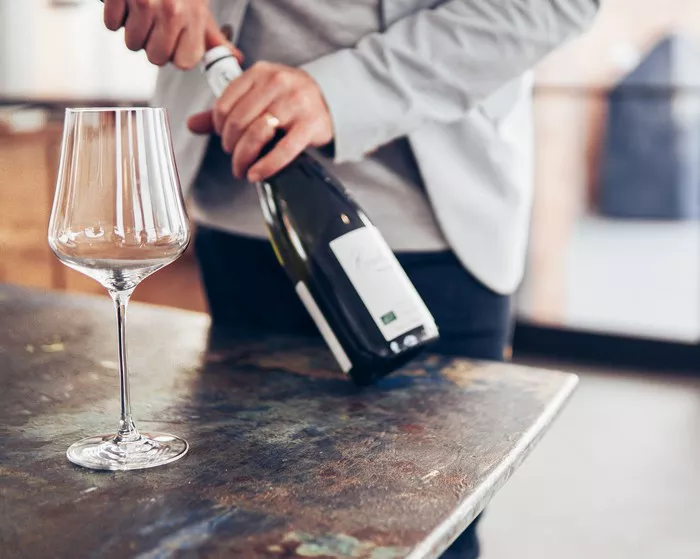Merlot wine is often a subject of curiosity among wine enthusiasts, sparking debates about its true classification: red or white. The confusion arises due to varying perceptions, regional practices, and the evolving nature of winemaking. This article aims to delve into the intricacies of Merlot wine, shedding light on its color, characteristics, origins, and the reasons behind its classification as a red wine despite occasional exceptions.
Understanding Merlot: Origins and Characteristics
Merlot, a grape varietal with its origins deeply rooted in the Bordeaux region of France, is renowned for its versatility and approachability. Its name, derived from the French word “merle,” meaning blackbird, alludes to the grape’s deep blue color. Despite its prominence in Bordeaux blends, Merlot stands as a standalone varietal, showcasing a spectrum of flavors ranging from plump dark fruits to subtle herbal notes.
The Red Nature of Merlot Wine
Primarily known as a red wine, Merlot embodies the classic characteristics associated with red varietals. The grape’s skin, where much of the color and tannins reside, holds the key to the wine’s hue. During the winemaking process, the skins of Merlot grapes remain in contact with the fermenting juice, imparting the wine with its distinct red coloration. The resulting wine typically exhibits a spectrum of red hues, ranging from deep ruby to garnet, depending on factors like aging and production techniques.
Varietal Variation and Regional Practices
Despite its general classification as a red wine, Merlot’s color can occasionally lean towards a lighter shade, resembling some white wines. This variation may occur due to several factors, including specific winemaking techniques, shorter maceration periods, or blending with other varietals. In some regions, winemakers experiment with ‘Blanc de Merlot,’ a white wine made from Merlot grapes, employing gentle pressing methods that limit contact between the skins and juice.
The Influence of Terroir on Merlot’s Color
Merlot’s color spectrum can also be influenced by terroir—the combination of soil, climate, and geography where the grapes are grown. Cooler climates tend to produce Merlot grapes with thicker skins, intensifying the red pigmentation. Conversely, warmer climates may yield grapes with thinner skins, resulting in lighter-colored wines. Soil composition and vineyard elevation also play pivotal roles, influencing the grape’s phenolic compounds and subsequently affecting the wine’s color profile.
Merlot’s Tasting Profile: Characteristics of a Red Wine
The tasting profile of Merlot aligns more closely with that of red wines, boasting flavors that resonate with red fruit, including plum, cherry, and raspberry. Additionally, Merlot wines often carry herbal undertones such as mint, eucalyptus, or hints of green bell pepper. These characteristics, combined with soft tannins and moderate acidity, contribute to the wine’s accessibility and widespread appeal.
Merlot as a Foundation in Bordeaux Blends
In Bordeaux, Merlot plays a crucial role in creating renowned red blends alongside Cabernet Sauvignon, Cabernet Franc, Petit Verdot, and Malbec. Its inclusion in these blends provides roundness, softness, and a plump fruitiness that counterbalances the robust tannins of other varietals. Despite its prominence in Bordeaux wines, the final blend’s color remains deeply red, owing to the dominant presence of Merlot and other red grapes.
Merlot’s Versatility and Global Presence
Beyond Bordeaux, Merlot thrives in various wine regions across the globe, showcasing its adaptability to diverse terroirs. In regions like California, Chile, Italy, and Australia, winemakers craft Merlot wines that exhibit regional nuances while staying true to its characteristic red hue. The grape’s adaptability and approachability have contributed to its popularity among winemakers and consumers alike.
Challenges in Defining Merlot’s Color
The challenge of definitively categorizing Merlot as strictly red or white lies in the evolving landscape of winemaking practices and consumer preferences. Winemakers continually experiment with different methods, pushing boundaries and occasionally producing unconventional styles that blur the lines between red and white. Consequently, this ongoing evolution adds layers of complexity to the classification of Merlot wine.
Navigating the Perception of Merlot’s Color
While the majority of Merlot wines align with the red wine category, exceptions and variations exist, contributing to the confusion surrounding its classification. Consumers and enthusiasts should approach Merlot with an open mind, acknowledging the potential for stylistic diversity. Exploring various Merlot offerings from different regions and producers provides a comprehensive understanding of its spectrum of colors and flavors.
Conclusion: Embracing Merlot’s Diversity
In conclusion, Merlot wine is predominantly classified as a red wine due to its characteristics, winemaking processes, and traditional conventions. However, variations in winemaking techniques, terroir influences, and occasional experimental practices can occasionally result in lighter-hued versions that challenge this classification. Ultimately, embracing the diversity within the realm of Merlot wine allows enthusiasts to appreciate its multifaceted nature, regardless of its shade, and to savor the unique characteristics that each bottle offers.
In the grand tapestry of wines, Merlot stands as a testament to the artistry and innovation of winemakers, inviting exploration and appreciation. Its nuanced flavors, coupled with its intriguing color variations, contribute to its enduring allure in the world of wine. Whether red or displaying a lighter hue, Merlot continues to captivate palates and spark conversations, showcasing its versatility and remaining a beloved varietal in the hearts of wine enthusiasts worldwide.


